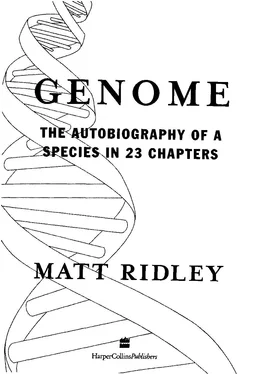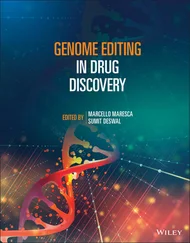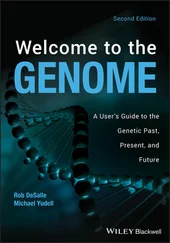Genome - Matt Ridley
Здесь есть возможность читать онлайн «Genome - Matt Ridley» — ознакомительный отрывок электронной книги совершенно бесплатно, а после прочтения отрывка купить полную версию. В некоторых случаях можно слушать аудио, скачать через торрент в формате fb2 и присутствует краткое содержание. Жанр: Старинная литература, на английском языке. Описание произведения, (предисловие) а так же отзывы посетителей доступны на портале библиотеки ЛибКат.
- Название:Matt Ridley
- Автор:
- Жанр:
- Год:неизвестен
- ISBN:нет данных
- Рейтинг книги:5 / 5. Голосов: 1
-
Избранное:Добавить в избранное
- Отзывы:
-
Ваша оценка:
- 100
- 1
- 2
- 3
- 4
- 5
Matt Ridley: краткое содержание, описание и аннотация
Предлагаем к чтению аннотацию, описание, краткое содержание или предисловие (зависит от того, что написал сам автор книги «Matt Ridley»). Если вы не нашли необходимую информацию о книге — напишите в комментариях, мы постараемся отыскать её.
Matt Ridley — читать онлайн ознакомительный отрывок
Ниже представлен текст книги, разбитый по страницам. Система сохранения места последней прочитанной страницы, позволяет с удобством читать онлайн бесплатно книгу «Matt Ridley», без необходимости каждый раз заново искать на чём Вы остановились. Поставьте закладку, и сможете в любой момент перейти на страницу, на которой закончили чтение.
Интервал:
Закладка:
Approximately one in five people are genetically unable to release the water-soluble form of the A B O blood group proteins into their saliva and other body fluids. These 'non-secretors' are more likely to suffer from various forms of disease, including meningitis, yeast infection and recurrent urinary tract infection. But they are less likely to suffer from influenza or respiratory syncitial virus. Wherever you D I S E A S E 143
look, the reasons behind genetic variability seem to have something to do with infectious disease.6
We have barely scratched the surface of this subject. As they scourged our ancestors, the great epidemic diseases of the past -
plague, measles, smallpox, typhus, influenza, syphilis, typhoid, chicken pox, and others - left behind their imprint on our genes.
Mutations which granted resistance thrived, but that resistance often came at a price, the price varying from severe (sickle-cell anaemia) to theoretical (the inability to receive transfusions of the wrong type of blood).
Indeed, until recently, doctors were in the habit of underestimating the importance of infectious disease. Many diseases that are generally thought to be due to environmental conditions, occupation, diet or pure chance are now beginning to be recognised as the side-effects of chronic infections with little known viruses or bacteria. The most spectacular case is stomach ulcers. Several drug companies grew rich on new drugs intended to fight the symptoms of ulcers, when all that were needed all along were antibiotics. Ulcers are caused by Helicobacter pylori, a bacterium usually acquired in childhood, rather than by rich food, anxiety or misfortune. Likewise, there are strong suggestive links between heart disease and infection with chlamydia or herpes virus, between various forms of arthritis and various viruses, even between depression or schizophrenia and a rare brain virus called Borna disease virus that usually infects horses and cats.
Some of these correlations may prove misleading and in other cases the disease may attract the microbe rather than the other way round.
But it is a proven fact that people vary in their genetic resistance to things like heart disease. Perhaps these genetic variants, too, relate to resistance to infection.7
In a sense the genome is a written record of our pathological past, a medical scripture for each people and race. The prevalence of O blood groups in native Americans may reflect the fact that cholera and other forms of diarrhoea, which are diseases associated with crowded and insanitary conditions, never established themselves in the newly populated continents of the western hemisphere 1 4 4 G E N O M E
before relatively modern times. But then cholera was a rare disease probably confined to the Ganges delta before the 1830s, when it suddenly spread to Europe, the Americas and Africa. We need a better explanation of the puzzling prevalence of the O version of the gene in native Americans, especially given the fact that the blood of ancient pre-Columbian mummies from North America seems quite often to be of the A or B type. It is almost as if the A and B genes were rapidly driven extinct by a different selection pressure unique to the western hemisphere. There are hints that the cause might be syphilis, a disease that seems to be indigenous to the Americas (this is still hotly disputed in medical-history circles, but the fact remains that syphilitic lesions are known in North American skeletons from before 1492, but not in European skeletons from before that date). People with the O version of the gene seem to be less susceptible to syphilis than those with other blood types.8
Now consider a bizarre discovery that would have made little sense before the discovery of the association between susceptibility to cholera and blood groups. If, as a professor, you ask four men and two women each to wear a cotton T-shirt, no deodorant and no perfume, for two nights, then hand these T-shirts to you, you will probably be humoured as a mite kinky. If you then ask a total of 121 men and women to sniff the armpits of these dirty T-shirts and rank them according to attractiveness of smell, you will be considered, to put it mildly, eccentric. But true scientists should not be embarrassable. The result of exactly such an experiment, by Claus Wederkind and Sandra Furi, was the discovery that men and women most prefer (or least dislike) the body odour of members of the opposite sex who are most different from them genetically. Wederkind and Furi looked at M H C genes on chromosome 6, which are the genes involved in the definition of self and the recognition of parasitic intruders by the immune system. They are immensely variable genes. Other things being equal, a female mouse will prefer to mate with a male that has maximally different M H C genes from herself, a fact she discerns by sniffing his urine. It was this discovery that alerted Wederkind and Furi to the possibility that we, too, might D I S E A S E 1 4 5
retain some such ability to choose our mates on the basis of their genes. Only women on the contraceptive pill failed to show a clear preference for different M H C genotypes in male-impregnated T-shirt armpits. But then the pill is known to affect the sense of smell. As Wedekind and Furi put it,9 'No one smells good to everybody; it depends on who is sniffing whom.'
The mouse experiment had always been interpreted in terms of outbreeding: the female mouse tries to find a male from a genetically different population, so that she can have offspring with varied genes and little risk of inbred diseases. But perhaps she - and T-shirt-sniffing people - are actually doing something that makes sense in terms of the blood-group story. Remember that, when making love in a time of cholera, an AA person is best off looking for a BB mate, so that all their children will be cholera-resistant ABs. If the same sort of system applies to other genes and their co-evolution with other diseases - and the M H C complex of genes seems to be the principal site of disease-resistance genes - then the advantage of being sexually attracted to a genetic opposite is obvious.
The Human Genome Project is founded upon a fallacy. There is no such thing as 'the human genome'. Neither in space nor in time can such a definite object be defined. At hundreds of different loci, scattered throughout the twenty-three chromosomes, there are genes that differ from person to person. Nobody can say that the blood group A is 'normal' and O, B and AB are 'abnormal'. So when the Human Genome Project publishes the sequence of the typical human being, what will it publish for the A B O gene on chromosome 9? The project's declared aim is to publish the average or
'consensus' sequence of 200 different people. But this would miss the point in the case of the A B O gene, because it is a crucial part of its function that it should not be the same in everybody. Variation is an inherent and integral part of the human - or indeed any —
genome.
Nor does it make sense to take a snapshot at this particular moment in 1999 and believe that the resulting picture somehow represents a stable and permanent image. Genomes change.
1 4 6 G E N O M E
Different versions of genes rise and fall in popularity driven often by the rise and fall of diseases. There is a regrettable human tendency to exaggerate stability, to believe in equilibrium. In fact the genome is a dynamic, changing scene. There was a time when ecologists believed in 'climax' vegetation - oak forests for England, fir forests for Norway. They have learnt better. Ecology, like genetics, is not about equilibrium states. It is about change, change and change.
Nothing stays the same forever.
The first person who half glimpsed this was probably J. B. S.
Haldane, who tried to find a reason for the abundance of human genetic variation. As early as 1949 he conjectured that genetic variation might owe a good deal to the pressures of parasites. But Haldane's Indian colleague, Suresh Jayakar, rocked the boat in 1970
Читать дальшеИнтервал:
Закладка:
Похожие книги на «Matt Ridley»
Представляем Вашему вниманию похожие книги на «Matt Ridley» списком для выбора. Мы отобрали схожую по названию и смыслу литературу в надежде предоставить читателям больше вариантов отыскать новые, интересные, ещё непрочитанные произведения.
Обсуждение, отзывы о книге «Matt Ridley» и просто собственные мнения читателей. Оставьте ваши комментарии, напишите, что Вы думаете о произведении, его смысле или главных героях. Укажите что конкретно понравилось, а что нет, и почему Вы так считаете.












